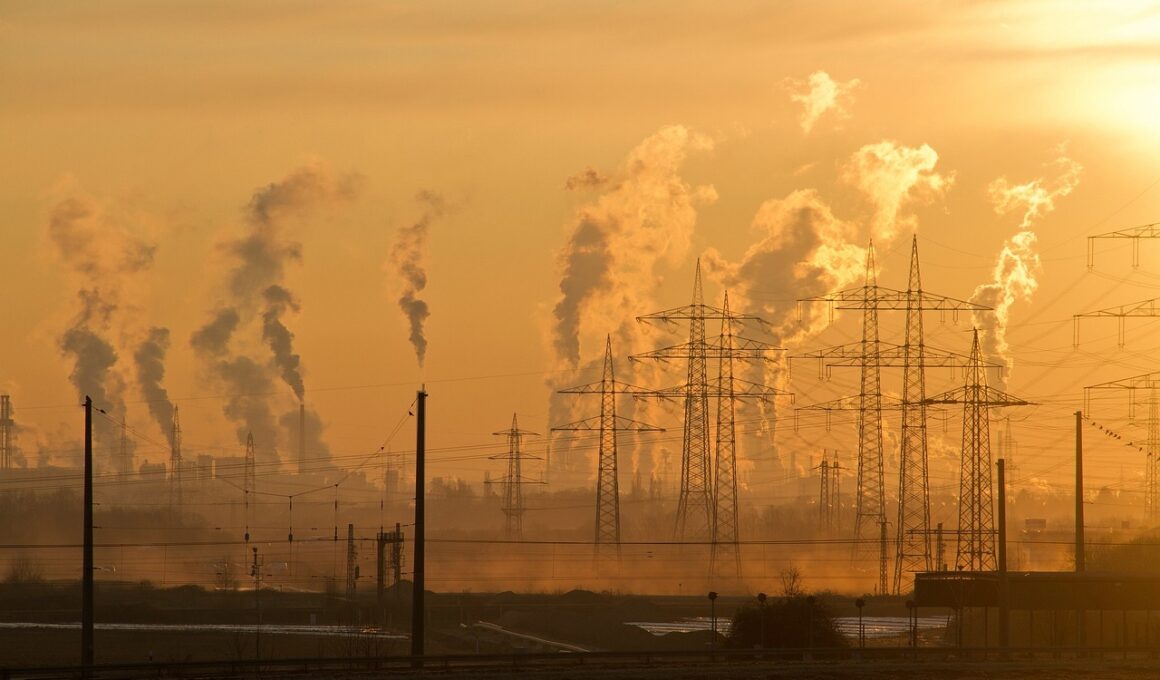Environmental Challenges Facing Winter Sports Competitions
The impact of global warming poses a significant threat to winter sports competitions. As temperatures rise, natural snow reserves diminish, impacting events like skiing and snowboarding. In addition, the reliance on artificial snow raises environmental concerns, as the processes involved in producing and maintaining this snow are resource-intensive. For example, water scarcity in regions hosting winter sports can become an increasing concern, affecting ecosystems and local communities. The changing landscape also leads to altered sports conditions, creating inconsistencies that may compromise athlete performance and safety. The increased frequency of extreme weather events exacerbates the risk of unsafe conditions for competitors and spectators alike. Notably, weather changes during events can lead to cancellations or rescheduling that disrupt the Olympics schedule. Meanwhile, organizers face increased pressure to adapt their strategies sustainably to mitigate climate change effects. This includes developing eco-friendly infrastructure and transportation methods. Furthermore, rigorous assessments of environmental impacts are essential during planning phases for the Winter Olympics. As a result, collaboration among stakeholders is needed to address these ecological challenges effectively, ensuring the future viability of winter sports competitions around the world.
One critical aspect of the environmental challenges is the pressure on water resources that arise from artificial snow production. Resorts and venues depend on consistent snow coverage to ensure safety and enjoyable experiences for athletes and fans. Consequently, this results in significant water usage, detracting from local access to this vital resource, particularly in dry regions. In many locations, this competition for water further adds to existing tensions within communities regarding agricultural and personal use rights. As a result, the impact extends beyond just athletes and audiences as local residents often face repercussions. Climate projections indicate that without sustainable measures, many traditional winter sports destinations may lose their competitive edge as environments change. Innovative solutions can be implemented here, such as rainwater harvesting or recycling systems that help alleviate competition for water. However, these approaches require significant investment upfront and ongoing maintenance efforts. Moreover, stakeholder involvement is essential for determining fair and equitable methods for resource distribution. Implementing these practices can lend a competitive advantage while also demonstrating awareness and responsibility towards ecological sustainability.
Preserving Snow Quality and Quantity
Another pressing issue involves preservation strategies for both snow quality and quantity at winter sports venues. Factors like warmer temperatures not only reduce the amount of snow but also deteriorate the conditions necessary for various competitions. Skiing, for example, demands consistent snow depths and temperatures to ensure athletes’ safety and effectiveness. Warmer weather may lead to a melt-off that compromises the structural integrity of slopes and courses. This raises deeper questions about long-term planning and how venues can evolve to adapt. Notably, many resorts have begun employing more advanced snowmaking technology aimed at producing higher quality, more sustainable snow. These advancements still require careful management of energy consumption and raw materials. Additionally, maintaining the right snow conditions throughout the event timeline is crucial for the athletes’ experiences. This ongoing effort can help mitigate the effects of unstable weather patterns, allowing the Olympic spirit to thrive despite external challenges. Ultimately, education about best practices and sustainability in winter sports is an integral part of meeting these evolving demands as weather changes impact venues worldwide.
The logistics behind hosting winter sports events also contribute to environmental challenges. Transportation systems required to move athletes, officials, and spectators consume a considerable amount of energy and produce greenhouse gas emissions. This factor increasingly affects sustainability planning and offers opportunities for improvement. Transport systems must evolve to ensure minimal environmental impact while efficiently accommodating large operations. Olympic planners can encourage eco-friendly transportation initiatives, including electric buses, bike-sharing schemes, and enhanced public transport networks. Moreover, promoting local tourism not only supports surrounding economies but also reduces individual travel footprints. Evaluating the carbon footprint linked with travel arrangements and providing offset programs are essential steps toward responsible event management. Collaboration among various stakeholders can establish practical guidelines and incentives for sustainable transportation options. With increased global attention to climate change repercussions, finding innovative and sustainable solutions is imperative for future events. Winter sports competitions have the unique ability to lead the way through engagement and efforts towards a responsible approach that combines tradition with care for the planet while enhancing the experience for fans and competitors.
Wildlife Conservation and Biodiversity
Winter sports competitions can significantly impact local biodiversity and wildlife. The expansion of infrastructure and increased human activity required for hosting events may disrupt native habitats. Furthermore, pollution from artificial snowmaking and heavy traffic can harm local flora and fauna. Protecting ecosystems is essential to maintain the environmental balance that sustains these habitats. Effective planning and collaboration with environmental organizations can address these concerns while also informing the development of sustainable practices. Employing strategies such as creating buffer zones around protected areas and strictly regulating human interaction may help mitigate these risks. Engaging with local communities to establish conservation programs can enhance the impact further. Additionally, awareness campaigns about the importance of preserving local species could actively involve athletes and spectators, turning them into advocates for environmental preservation. By embracing these practices, winter sports events can foster a culture of conservation, contributing to sustainable development and ecological awareness beyond the games themselves. Moreover, conservation efforts provide a valuable legacy for future generations, ensuring a rich environment for both winter sports and the wildlife residing in those regions.
Another dimension to consider is the cultural impact of winter sports on local communities, often greatly tied to the environment. Many regions hosting such events have longstanding traditions associated with winter sports, deeply rooted in their cultural identities. However, as climate change and environmental challenges alter landscapes, these cultural practices may also be threatened. Traditional winter festivities and sports can fade away if adapted venues lose their snow quality or reliable conditions. Balancing modern demands with preservation efforts often creates tensions between development and local cultural significance. Engaging communities in decision-making processes about hosting winter sports events can ensure that cultural perspectives are honored. This approach encompasses not only the environmental aspects but also promotes social equity and community support. For winter sports to remain truly representative of the locales they occupy, it is essential to weave traditional values into contemporary practices and maintain open dialogue. By acknowledging the unique cultural contributions local communities offer, winter competitions can genuinely embody the spirit of inclusivity and connect global audiences to their heritage. Investing in programs that encourage cultural exchange can enrich both local and worldwide sporting events.
Looking Towards a Sustainable Future
Reflecting on the environmental challenges of winter sports competitions illuminates the path towards sustainability. Acknowledge climate-related impacts while implementing proactive solutions is vital for the continuity of these events. In many ways, winter sports can serve as models for broader environmental change by prioritizing sustainability in the planning of competitions. Innovations targeting energy efficiency, resource conservation, and eco-friendly approaches offer promising avenues for mitigating negative environmental consequences. Exploring opportunities to reduce overall event footprints while embracing renewable energy sources can further demonstrate commitment to climate action in sports. Alongside these efforts, investment in research and education is critical for developing comprehensive strategies to move forward sustainably. Collaborative efforts enhance the ability to create impactful solutions that engage fans, athletes, and stakeholders alike. Future success in winter sports relies on adaptability and innovation, which must be woven into organizational cultures. By fostering a sense of environmental awareness within all involved, winter sports competitions can demonstrate responsible stewardship of natural resources while providing thrilling experiences for athletes and viewers. Ultimately, embracing a sustainable future will ensure that winter sports thrive in harmony with nature.
In conclusion, tackling the environmental challenges facing winter sports competitions requires a multifaceted approach that emphasizes sustainability, innovation, and community involvement. By learning from the current state and examining the various impacts outlined in this article, organizers can create strategies that support ecological balance while maintaining the excitement of winter sports. Collaborating with local stakeholders, optimizing resource usage, and committing to conservation efforts can help establish a strong foundation for future events. Additionally, engaging younger generations and highlighting opportunities for climate advocacy can inspire change on a larger scale. As the climate crisis continues to shape conditions within the sports world, actively prioritizing environmental responsibility will ensure the relevance of winter sports in the years to come. Embracing change, evolving practices, and advocating for mindful development will empower athletes and communities alike toward a sustainable future. The potential for future generations to enjoy winter sports should encourage every stakeholder to invest in mindful practices now. With unified efforts, initiatives may seamlessly incorporate environmental stewardship into winter sports competitions, securing their legacy. The spirit of the Winter Olympics can shine brightly with a renewed commitment to the environment, paving the way for a healthier planet.


